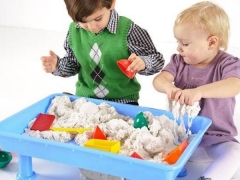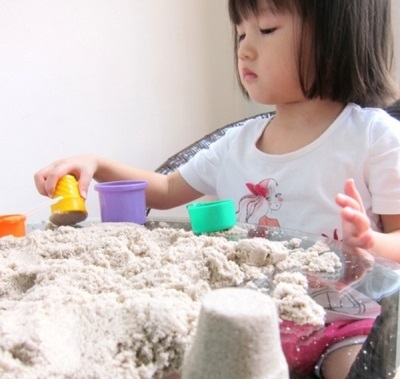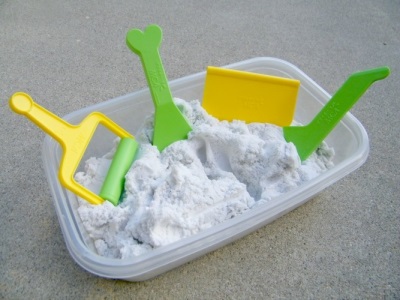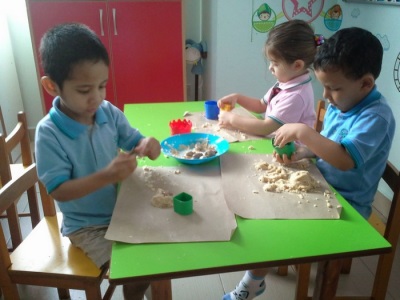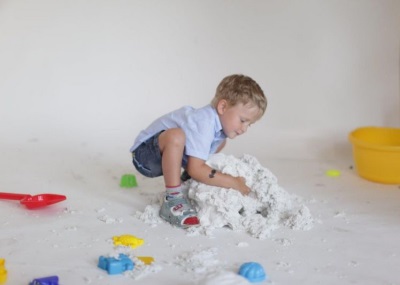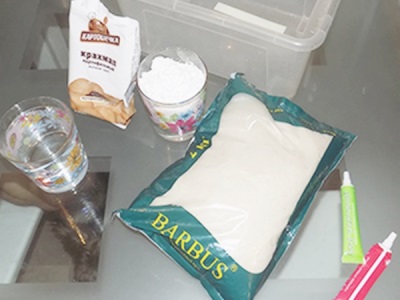Live sand - what is it?
All children love to play in the sandbox, but parents can not always provide them with such a fun pastime, for example, if it is raining or snowing outside, or is polluted in the yard because of stray animals. The best way out is to arrange your own sandbox at home, but it is better to take sand for games not usual, but live.
Purpose
The sand, which is called alive, was created in South Korea for classes with children. Such material allows you to have fun, fantasize, invent different games, learn shapes, sizes, counting and much more.
Benefit
- Safe and harmless to the child, because it is an environmentally friendly material.
- Classes and various games with him help in the development of thinking, memory and imagination.
- Thanks to the tactile influence and the development of fine motor skills, games with it stimulate the development of speech.
- You can play with him at any time of the year, despite the weather outside. The purchase will help in the organization of children's leisure in the winter or in the rain. In this case, you can play in the home sandbox with your parents or with friends.
Pluses in comparison with usual sand
- Does not stain the hands of a child or the playing surface. It is easy to wash it off from the baby’s hands and clothes.
- It has a nice white color.
- It is more plastic and makes it easy to sculpt various figures. To the touch, it is a bit like wet sea sand. To preserve its viscosity does not need to be mixed with water.
- It is crumbly and children like to pour it from molds into a container.
- It is very pleasant to the touch, and therefore children enjoy playing with it, relax and calm down.
- Hazardous microorganisms cannot develop in the living sand, which makes it stand out from the outside.
- It is very easy to assemble. After the game, he will not pollute the entire room, and will remain in a limited area.
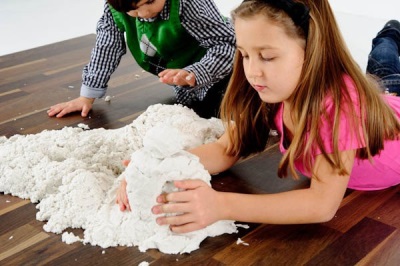
Minuses
- The cost is quite high. This material is more expensive than similar kinetic or cosmic sand.
- If you keep it for a very long time, a "musty" smell appears, especially if the tank with sand is closed.
- It may stick to clothes and shoes, and although it is quickly washed with water, this will decrease the amount in the package over time.
- Since its density is quite high, a package weighing 500 g does not hold very much material.
Composition
The sand, which is called living, consists of a small shell rock and a small amount of binder. Although it is only about 2%, it is this substance that causes all the properties of living sand. However, many parents are interested in whether it is dangerous if the child swallows it.
The manufacturer claims that the shell rock, hitting the digestive tract in a small amount, does not affect the health of the child. Give the child some water and watch the crumbs carefully.
Views and what may be included
Living sand is sold in packs of 500 g and 1500 g, as well as sets of several boxes with a total weight of 3 and 4.5 kg.
You can also purchase kits containing another set of molds and an inflatable sandbox. Separately sold a variety of accessories for games with live sand - mats, containers, rollers, molds, scoops, spoons, knives, seals and much more.
From what age can I give?
The manufacturer recommends starting classes with live sand from 3 years of age. However, under the supervision of an adult, you can play with such material for as long as a year.
It is only important not to leave the baby sculpt alone and not allow the crumb to eat it.

How much do you need for a full game?
The smaller the child who buys live sand, the less material he needs to play. This is because children under the age of 3 years quickly lose interest in any activity and are less assiduous. A small package from 500 g is enough for them.
Also, small packages are in demand as a gift, so that the presented kid tries a new unusual material for modeling.
If a child loves to tinker with sand, you buy such material for your child over the age of 3 for the first time, or you want to buy it for several children, take a close look at large packages weighing 3 kg or more.
Storage and operation features
- Keep it in a container, with a lid to close it is not advised. The material will retain its properties only with the access of oxygen.
- Arrange games and engage with him should be away from the direct rays of the sun.
- It is important not to let any liquid into it. If part of the material is wet, it should be discarded.
- Before starting the game, make sure that the hands of the child are completely dry.
- Watch the game of the child, not allowing the material to fall into the mouth, eyes or ears of the baby.
- It is advisable to play on a flat and smooth surface. The best choice for games will be glass, plastic or a special mat. Do not scatter it on fabric, paper and other porous surfaces.
- Protect from dirt and foreign objects.
- Do not add to this material the usual sand, clay, clay and other materials for modeling, so as not to violate its properties.
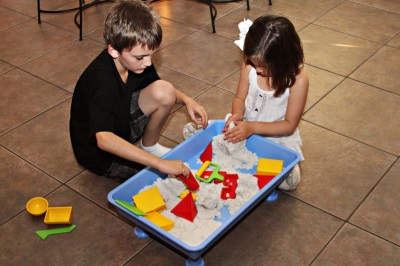
Where can one buy?
Purchase in many cities is still a difficult task, because this material was created and began to be sold outside South Korea relatively recently.
If there is no such material in the children's shop of your city for the modeling yet, contact the specialized online stores that sell branded live sand. Such a product must have documentation confirming its quality and safety.
Reviews
Parents who have already purchased live sand for their kids are mostly satisfied with such a purchase. The main advantages they call safety, high quality, as well as originality. Moms say that kids like to engage with this environmental and harmless material. Yes, and parents also mold out of it with great pleasure.
Among the shortcomings, most parents call it expensive. Also, there are complaints about the appearance of an unpleasant odor, lack of color options and storage complexity.
Analogs
In addition to live sand, other types of sand for modeling are now represented on the market - kinetic and space.
Although all these materials are called sand and are used for educational games, but they have their differences. First of all, this is the country of origin - if the living sand is produced in Asia, then the Swedes are engaged in the production of kinetic, and the space sand is a domestic product. It also causes the difference in cost (but living costs more than even kinetic).
Such species differ in their composition (the basis of the living sand is the shell rock, and other types are quartz sand) and the consistency.In addition, they have a different color - in the living sand it is white, and the cosmic and kinetic brown or color.
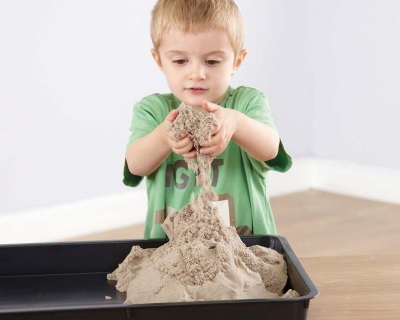
Can I do it myself?
Since the price of living sand is quite high, many parents are interested in the possibility of creating an analog of their own hands. And it is really possible to make similar material at home.
For this you will need the following materials:
- Fine purified quartz sand. The best option would be the one that is sold for animals (birds, chinchillas).
- Starch. Both potato starch and corn starch will do. It can also be replaced with corn flour.
- Pure water.
- Food coloring or watercolor paints.
Read more the process of making live sand do it yourself You can read in another article.
